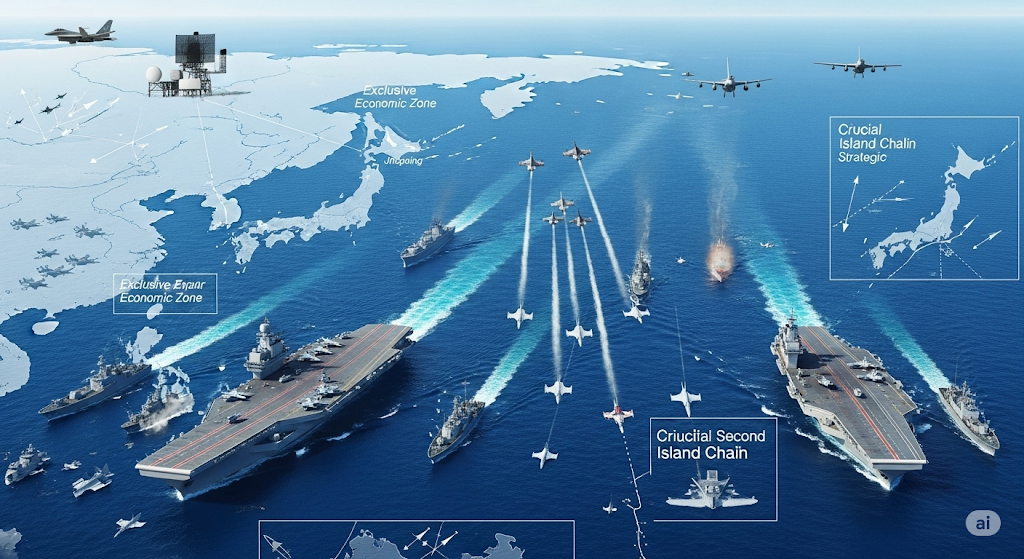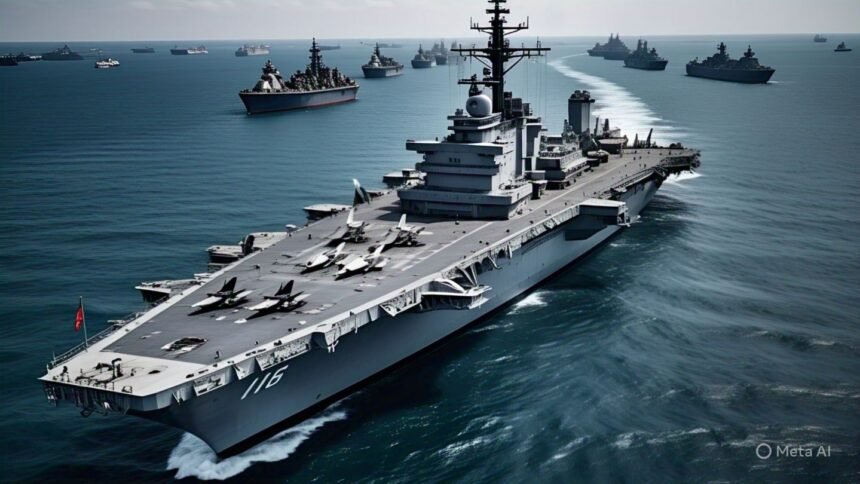Chinese Naval Drill Near Japan, tokyo Lodges Protest Over Chinese Military Movements
Chinese Naval Drill Near Japan,A large-scale Chinese naval drill near Japan has raised alarm in Tokyo, which recently filed a formal protest with Beijing. In a rare move, Japan publicly disclosed detailed information about Chinese military activities in the region.
Unprecedented Dual Carrier Drills in the Pacific
China’s two aircraft carriers, the Shandong and the Liaoning, have been conducting simultaneous exercises in the Pacific Ocean—an unprecedented development. Hundreds of fighter jet take-offs and landings from these carriers have been recorded, some involving close encounters with Japanese surveillance aircraft.
Close Encounters Spark Safety Concerns
Japanese officials expressed “serious concerns” after several Chinese fighter jets flew dangerously close to Japanese planes. Notably, on June 7 and 8, Chinese jets followed Japanese surveillance aircraft for extended periods, Chinese Naval Drill Near Japan,crossing dangerously close and raising fears of accidental collisions.
Japan Releases Maps Tracking Chinese Carrier Movements
The map shows the carriers approaching Japanese islands and sailing through Japan’s Exclusive Economic Zone (EEZ),Chinese Naval Drill Near Japan, where Japan has exclusive rights to marine resources.
Liaoning Crosses the Second Island Chain

The map also reveals the Liaoning crossing the “second island chain,” a key strategic defense line linking Japan to Guam.Chinese Naval Drill Near Japan, This marks the first time a Chinese aircraft carrier has crossed this line, according to Japanese reports.China maintains that its naval activities comply with international law and accused Japan of engaging in “dangerous moves” by closely monitoring Chinese forces. Chinese Naval Drill Near Japan,The Chinese foreign ministry emphasized that Japan’s reconnaissance poses maritime and air security risks.Chinese Naval Drill Near Japan
China’s military announced that its newest carrier, the Fujian, is undergoing sea trials and is expected to enter service later this year.Chinese Naval Drill Near Japan, The Fujian will be China’s first carrier equipped with electromagnetic catapults, allowing faster launches and heavier payloads for fighter jets, significantly enhancing operational capacity.This drill follows a controversial February naval exercise by China in the Tasman Sea, which prompted protests from Australia and New Zealand over insufficient notice.Chinese Naval Drill Near Japan, Australia later confirmed the exercise complied with international law but called for greater transparency amid concerns about China’s military buildup.Chinese Naval Drill Near Japan
Positive Aspects
Chinese Naval Drill Near Japan,
Demonstration of Military Capability:
Regional Security Assertion:
These drills assert China’s presence and strategic interests in the Pacific region, Chinese Naval Drill Near Japan,which is important for safeguarding its maritime claims and economic zones.
Promotion of Military Modernization:
The advanced training exercises help improve the readiness, coordination, and operational capabilities of the Chinese navy, contributing to overall modernization.
Encouragement of Diplomatic Dialogue:
The public disclosure and diplomatic exchanges between China and Japan may encourage transparency and dialogue, potentially preventing misunderstandings and conflict escalation.
Adherence to International Law (According to China):
China states its activities are within international law and maritime rights,Chinese Naval Drill Near Japan, reinforcing their narrative of lawful military operations.
Negative Aspects
Chinese Naval Drill Near Japan,
Heightened Regional Tensions:
The drills, especially close approaches to Japanese surveillance planes and incursions into Japan’s Exclusive Economic Zone, Chinese Naval Drill Near Japan,have increased diplomatic friction and mistrust between China and Japan.
Risk of Accidental Conflict:
Close encounters between military aircraft raise the possibility of accidents or miscalculations that could escalate into a broader conflict.
Provocation Perception:
Japan and some neighboring countries view these drills as aggressive or provocative acts that destabilize regional security.
Lack of Transparency:
Despite recent disclosures, the lack of prior notification and unclear intentions behind these drills fuel uncertainty and concern among neighboring nations.
Impact on International Relations
The exercises risk complicating relationships not only between China and Japan but also involving allies like the United States, Australia, and New Zealand, possibly escalating military rivalries.
